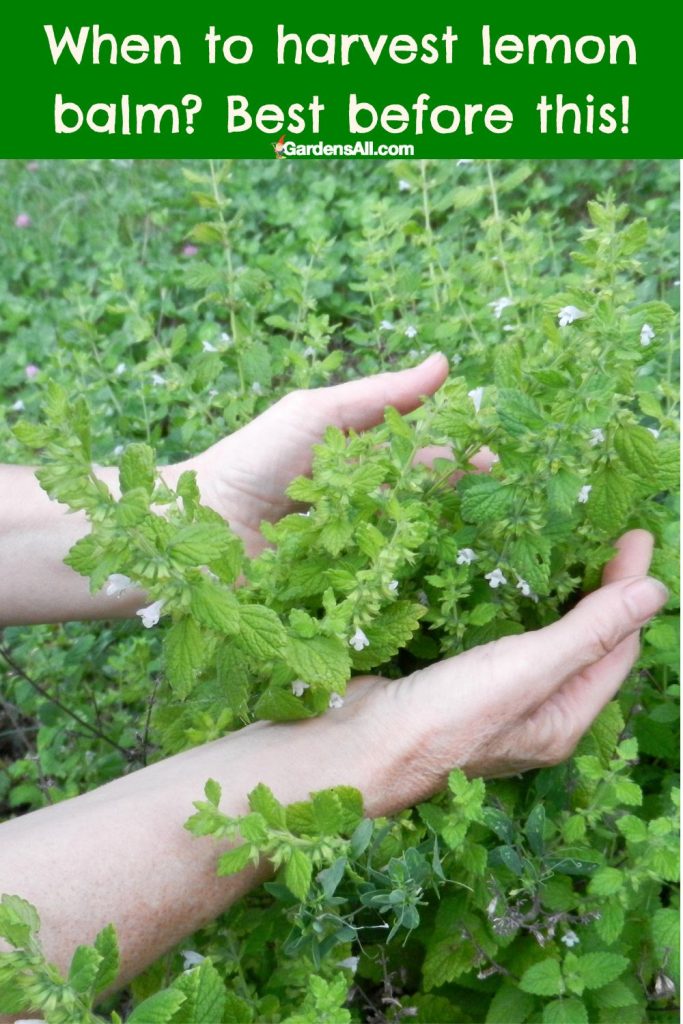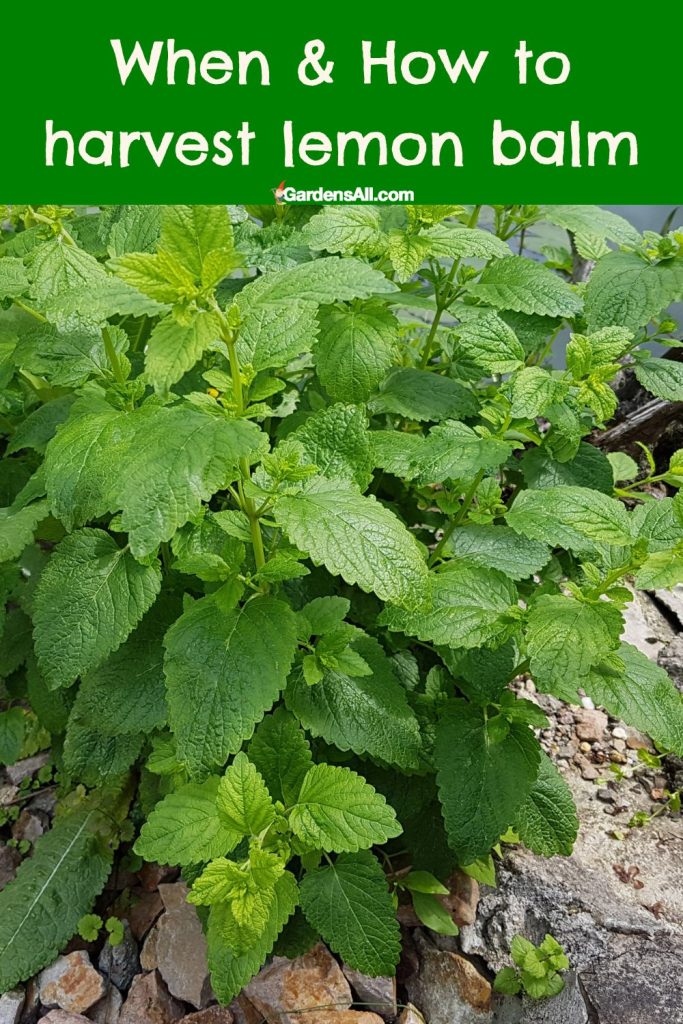If you’re new to growing it, you’ll want to know when and how to harvest lemon balm.
The versatile lemon balm, known for its refreshing citrusy aroma and plethora of uses, is a delightful addition to any herb garden. However, to get the most out of this perennial herb, it helps to understand when and how to harvest lemon balm for best results.
For more on growing lemon balm.

When to Harvest Lemon Balm
The best time to harvest lemon balm is just before the plant begins to flower. The oil content, responsible for the plant’s distinctive lemon-like scent and flavor, reaches its peak during this period. Depending on the specific climate conditions, this usually falls around late spring or early summer.
One noteworthy tip is to time your harvest in the morning, specifically after the dew has dried but before the heat of midday sets in. The essential oils in the plant, which contribute to its therapeutic and culinary appeal, are at their most potent during this time of day.
Here’s a brief outline to get you going with a little more info following that if you want to read on.
Quick Tips on When and How to Harvest Lemon Balm
- Morning harvest: Harvesting in the morning after the dew has dried, but before the midday sun, is best. This is when the essential oils of the plant are most concentrated.
- Pruning: When you harvest, you can prune the plant back by about one-third to one-half of its height. This will encourage new growth and allow you to get multiple harvests in a season.
- Flower Prevention: If you see flowers starting to form, you should cut them off. This will encourage the plant to put more energy into leaf growth, which is what you want for harvesting.

Harvesting Techniques for Optimal Yield
When it comes to harvesting, a gentle approach is advised. Pruning the plant back by about a third to a half of its height not only allows for an ample yield but also encourages new growth. This technique enables you to enjoy multiple harvests in a single growing season, maximizing the output from your lemon balm plant.
One common mistake among novice gardeners is allowing the lemon balm plant to flower. If you notice flower buds forming, it’s essential to nip them off promptly. Redirecting the plant’s energy towards leaf growth instead of flowering ensures a plentiful harvest, offering you more of the plant’s usable parts.
While harvesting, be mindful to leave enough leaves intact on the plant. This practice is crucial for the plant’s continued growth and productivity. Overharvesting can stress the plant and slow down or even halt its growth.
In conclusion, proper timing and technique in harvesting your lemon balm can significantly impact the quality and quantity of your yield. By keeping these tips in mind, you can ensure that you get the most out of this delightful herb, whether you’re using it for its culinary, medicinal, or aromatic properties.
Remember, always leave enough leaves on the plant to allow it to keep growing and producing, and your lemon balm plant should keep on producing for you well up to (and likely even beyond) the first freeze!
You may also enjoy this article on Uses for Lemon Balm.
I’m LeAura Alderson, a garden, herb and plant enthusiast with a passion for discovering the many edible and medicinal benefits of the plants all around us, including the weeds! I’m a writer, editor and media publisher for our family of websites.
While I was certified in fitness and life coaching, I am NOT a health practitioner. However, I’m a lifelong health enthusiast, with a keen interest in healthy, organic foods and making home remedies and the content we share is from our own experience and usage as well as that extracted from scientific research so that you can explore further on your own.
Always seek the advice and guidance of your health practitioners first and foremost.
As a family we’re steadily expanding our gardening, experimentation and knowledge around all things gardening, edible landscaping, fresh organic foods and self sustainability with farming in our future. I also own and manage iCreateDaily.com, a site all about transformation through creation, and the power of positivity, optimism and mindset.


